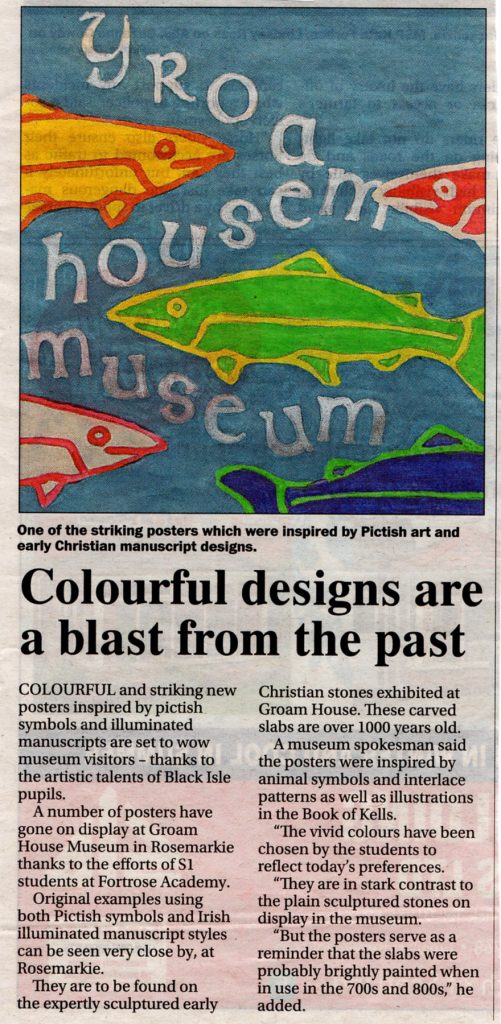New display at Groam House Museum
Fabulous posters by Fortrose Academy 1st year students
Groam House Museum is opening its 2019 season with a vibrant display of posters produced by Fortrose Academy students. First year pupils have been looking at the art of Pictish symbols and Irish illuminated manuscripts. Original examples using both artistic styles can be seen very close by, at Rosemarkie. They are to be found on the expertly sculptured early Christian stones exhibited at Groam House. These carved slabs are over 1,000 years old.
The posters have been inspired by animal symbols and interlace patterns as well as illustrations in the Book of Kells. The vivid colours have been chosen by the students to reflect today’s preferences. They are in stark contrast to the plain sculptured stones on display in the museum. But the posters serve as a reminder that the slabs were probably brightly painted when in use in the 700s and 800s AD.
The classes were surprised when they heard that Fortrose did not even exist when the sculptured stones were crafted in Rosemarkie. The early Christian monastery was sited there because of its beach and easily defined area of ground. Today’s church stands at the heart of the monastic enclosure and the carved slabs on display at Groam House were found there. But the religious significance of Rosemarkie did not continue into the medieval period. The bishopric needed more land for a new, larger cathedral, so it was built at Fortrose between 1214 and 1249.
Moving Ross-shire’s centre of religious organisation meant that Fortrose grew while Rosemarkie declined. The artistic craftsmanship of the scribes, woodturners and metalsmiths who probably worked at Rosemarkie’s monastery has not survived. But the specialist masons have left their marks – they carved the magnificent cross slab, altar, shrine and graveslabs that survive today. Their accomplishments continue to inspire.

